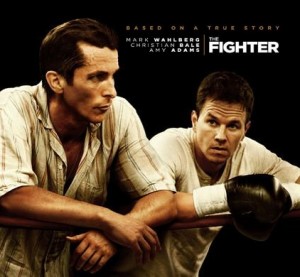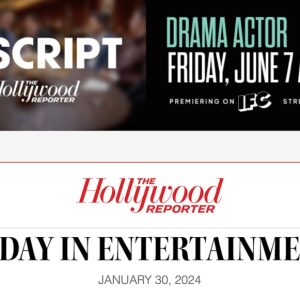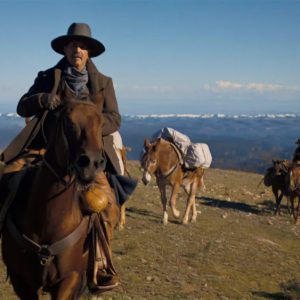The fight game has long been a fertile territory for Hollywood when it comes to gritty action films about hardscrabble knockabouts who find success and even heroism by overcoming big odds in the ring. Films like Somebody up There Likes Me, Raging Bull, Million Dollar Baby and now The Fighter have all gone the distance when it comes to providing inspiring portraits of overachievers making good with their fists.
The Fighter is the most recent example of this well-mined genre, in which working class underdogs from rough neighborhoods show us an example by overcoming almost inhumane odds both in body and spirit in a big screen adaptation of a true story, which makes the film even more unexpected and a thriller suspense with lingering thoughts that touch the soul long after one leaves the theater. In this case the neighborhood is Lowell, Massachusetts, where fighters Mickey Ward and half-brother Dick Eklund punched their way into the limelight after long hours spent at the local gym.
Dick was the first to achieve national prominence, and became a local hero for knocking down Sugar Ray Leonard in 1978, who was one the most successful fighters of his day. But Dick Eklund got sidetracked along the way, becoming a drug-addict and doing time in a local prison. As the result, his career got derailed and he ended up working as a trainer for half-brother Mickey Ward, pinning his dreams for a championship even though Mickey had suffered four straight losses and was a heavy underdog in his fights.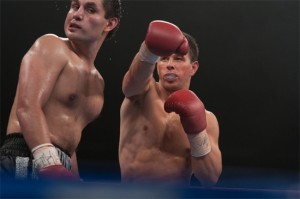
The story was one that actor/producer Mark Wahlberg was familiar with, having attempted to acquire the rights to the story earlier, and engaging in an extensive training regimen that included building his own boxing ring in anticipation of doing the film long before production ever began.
Wahlberg was eighteen when he first met Mickey Ward in Boston, when the actor was still a buffed-up pretty criminal turned rapper named Marky Mark and he became a huge fan of the fighter. Eventually Wahlberg approached his hero about one day playing him in a movie, but received cease-and-desist letters from the production company that was the owner of the rights to Ward’s life. It was only after a legal battle that Wahlberg got a call from Brad Weston, the president of production at Paramount Pictures. “They wanted me to read a script about Mickey Ward and Dickey Eklund,” Wahlberg recalls. “They had the rights.” Struck by the coincidence of being offered the lead role in the film he had wanted to make, Wahlberg went home and walked straight into his gym to prepare for the role.
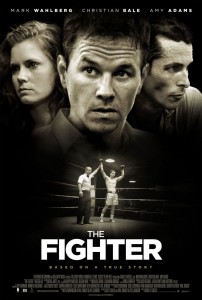 Eric Johnson and Paul Tamasy were hired to write the screenplay for The Fighter, with the intention of accurately portraying the brothers’ life story in a film free of any over-the-top, unrealistic fight scenes.
Eric Johnson and Paul Tamasy were hired to write the screenplay for The Fighter, with the intention of accurately portraying the brothers’ life story in a film free of any over-the-top, unrealistic fight scenes.
“I’ve seen every boxing movie ever made. I’m also a huge fight fan,” Wahlberg says. “I even fought a little bit when I was younger. Some of the greatest movies ever made, like Raging Bull and Rocky, which I saw 30 times, are great stories, but the fighting just wasn’t as realistic as what we hoped to achieve and accomplish in this movie.”
Obviously committed to the role, Wahlberg put himself on a rigorous training regimen to represent the fighter he once idolized. He had begun a strict bodybuilding regimen four years before the movie began shooting, and hired former professional boxer Freddie Roach to train him. Wahlberg helped set the tone of the film with his passion for realism. Not only did he have Mickey and Dickey move in with him during the film’s pre-production to understand their lives better, he also insisted on performing all of his own stunts. His commitment to the role also included enlisting the top trainer in the fight business, Freddie Roach, who also worked with Mickey Rourke in 1991, and has worked with the top talents in boxing and Mixed Martial Arts, including names like Mike Tyson, Oscar de la Hoya and his current protégé, eight division world champion Manny “Pacman” Pacquiao. Roach also has a direct family connection with the film, as his brother fought Mickey Ward’s brother Dickey when they were eight years old in the 50 lb. weight category. Roach’s training brought a whole new level of realism to the production.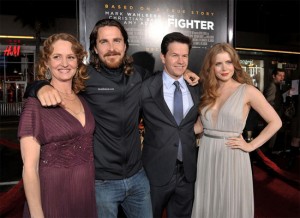
“You have to make it real. I was really hitting people and they hit back – hard,” Wahlberg says. “This wasn’t a stylized fight, it was real boxing. The real secret in doing a scene where I was hit in the face was to make sure it was the last shot of the day. I spent more money paying my trainers and having them travel with me than I got paid for the film, by a good half a million dollars.”
The movie was filmed on location in Ward’s hometown of Lowell, Massachusetts. The casting firmed up with Christian Bale in the role of Dickey Eklund at Wahlberg’s suggestion, a part that had once been offered to Brad Pitt and Matt Damon. Amy Adams, Melissa Leo and even fighter Sugar Ray Leonard were brought in for key supporting roles. After director Darren Aronofsky bowed out, the film was offered to David O. Russell (Three Kings, I Heart Huckabees).
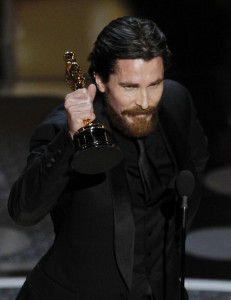 The film’s boxing matches were shot at the Tsongas Center at UMass Lowell, and gym scenes took place at Arthur Ramalho’s West End Gym, one of the real-life facilities where Ward had trained. “The boxing-match footage was created in big, choreographed sections that were taken directly from footage Mickey’s actual fights,” said Russell. “We also used the actual commentary from the HBO telecast, and actually hired the director from HBO and the crew who had done those fights to replicate them shot-for-shot.”
The film’s boxing matches were shot at the Tsongas Center at UMass Lowell, and gym scenes took place at Arthur Ramalho’s West End Gym, one of the real-life facilities where Ward had trained. “The boxing-match footage was created in big, choreographed sections that were taken directly from footage Mickey’s actual fights,” said Russell. “We also used the actual commentary from the HBO telecast, and actually hired the director from HBO and the crew who had done those fights to replicate them shot-for-shot.”
With Mark Wahlberg passionately committed to his role, Christian Bale also fully immersed himself in his character Dick “Dickey” Eklund. Given Eklund’s drug addiction, Bale had to lose weight and researched the part by keenly noting Eklund’s mannerisms and recording conversations to get the perfect inflection of the character’s thick Boston accent. “Dickey has a whole rhythm to him, a music,” Director Russell said. “Christian had to understand how his mind works.” Russell and Eklund were both impressed by Bale’s unwavering dedication to staying in character throughout filming.
“Dickey and me spent a lot of time together,” Bale says. “We went walking around the town and in every single bar there’s some incident that they can talk about that happened with Dickey there. A few of the bars, he’s not allowed in. He’s like the mayor. He walks down the street, everybody shouting out, ‘Dickey! Dickey!’”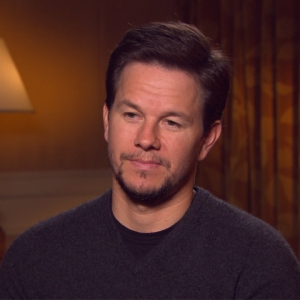
While Bale settled into the role of becoming Dickey Eklund, he also admits there were some portrayals that did not entirely meet with family approval: “The whole family is endlessly entertaining, but one of them got upset with how a certain scene was being done, and there was a few suggestions of physical actions that might happen if the actress continued that way. But that was all solved with a few drinks in the bar.”
Although the sports biography remains one of the most popular subjects in the film industry, most of them focus on a main character preparing for an all-important, life-changing game. With its commitment to realism, The Fighter elevated itself above the typical sports bio by focusing on the characters and the interplay of their relationships with each other. The heart and soul of The Fighter is contained in the extended Ward family, which includes Mickey’s girlfriend Charlene, played by Amy Adams, seven slightly scary sisters, the boys’ mother/manager, Alice, played with gum chewing brass by Melissa Leo, and Mickey’s wonderfully level-headed father, George (Jack McGee). Ward’s real life trainer, policeman Mickey O’Keefe, also plays himself in the film.
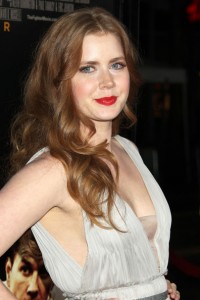 The Fighter captured this atmospheric family dynamic so well that it was nominated for 42 international film awards, winning 32 including Academy Awards in best supporting actor roles for Christian Bale and Melissa Leo (who, maybe still a little in character, infamously uttered the F-word during her acceptance speech). Overall, the film has been a tremendous critical and commercial triumph, grossing close to $95 million domestically on a $25 million budget, proving that, while good boxing films will always have a solid audience base, David O. Russell and his cast were also smart enough to let the realism of the characters and their conflicts play a key role in the film, revealing so much more than just the pounding fists of a boxing movie.
The Fighter captured this atmospheric family dynamic so well that it was nominated for 42 international film awards, winning 32 including Academy Awards in best supporting actor roles for Christian Bale and Melissa Leo (who, maybe still a little in character, infamously uttered the F-word during her acceptance speech). Overall, the film has been a tremendous critical and commercial triumph, grossing close to $95 million domestically on a $25 million budget, proving that, while good boxing films will always have a solid audience base, David O. Russell and his cast were also smart enough to let the realism of the characters and their conflicts play a key role in the film, revealing so much more than just the pounding fists of a boxing movie.
About the Author of This Article: Lady Adrienne Papp is a recognized journalist who has written for many publications including Savoir, Beverly Hills 90210, Malibu Beach, Santa Monica Sun, The Beverly Hills Times, Brentwood News, Bel-Air View, Celebrity Society, Celeb Staff, It Magazine, Chic Today, LA2DAY, West Side Today among many others. She is the President and CEO of Los Angeles / New York-based publicity company, Atlantic Publicityand publishing house, Atlantic Publisher. Adrienne writes about world trends, Quantum Physics, entertainment and interviews celebrities, world leaders, inventors, philanthropists and entrepreneurs. She also owns Atlantic United Films that produces and finances true stories made for theatrical release or the silver screen. Spotlight News Magazineis owned by Atlantic United, Incwith Adrienne Pappbeing the majority shareholder.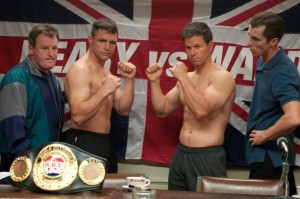
About the Author of This Article: Adrienne Papp is a recognized journalist, economist and feature writer, who has written for many publications including Savoir; The Westside Today Publications ; such as Beverly Hills 90210; Malibu Beach; Santa Monica Sun; The Beverly Hills Times; Brentwood News; Bel-Air View ; Celebrity Society ; Celeb Staff ; It Magazine; Chic Today; LA2DAY; West Side Today among many others. She is the President and CEO of Los Angeles / New York-based publicity company, Atlantic Publicity and publishing house, Atlantic Publisher. Adrienne writes about world trends, Quantum Physics, entertainment and interviews celebrities, world leaders, inventors, philanthropists and entrepreneurs. She also owns Atlantic United Films that produces and finances true stories made for theatrical release or the silver screen. Spotlight News Magazine is owned by Atlantic Publicity that just opened a new extension to it : PublicityLosAngeles. Adrienne Papp is a member of the International Press Academy.She is the Founder, CEO and President of Youthful & Ageless ™, Bringing Information to Billions™, An Honorable Cause™ www.LatestAgeless.com. www.OurMediaVenuesAndCompanies.com, Atlantic Publicity Articles, Latest Ageless, Events Photo Collection, Linked In Profile, Movie Data Base Profile, Twitter, Instagram, Youthful and Ageless Google+, Atlantic Publicity Google+, Atlantic Publisher Google+, Adrienne Papp Google+, Adrienne Papp Personal Google+, Spotlight News Magazine, Atlantic Publicity Productions, Atlantic Altitude, Altitude Pacific, Atlantic Publicity Photography and Filming, About Adrienne Papp What Others Say AtlanticPublicitySEO, BrilliantMarketing365, An Honorable Cause, Academic Research, Knighthood Today, Youthful and Ageless™. She was knighted and became a Dame in 2010. Her official name is Lady Adrienne Papp and Dame Adrienne Papp. Voting Member of The International Press Academy and The Oscars: Academy of Motion Picture Arts and Sciences. She is the Managing Editorial Director of The Beverly Hills Times Magazine, and Hollywood Weekly. She has a Master of Science in Economics majoring Logistics; an MBA Degree; An International Law, Trade and Finance Postgraduate: Marketing and Advertising Postgraduate from NYU and UCLA. Guest Professor at Oxford University; Director and Producer of TV and Airline On Camera Editorials; Adrienne Papp Enterprises

